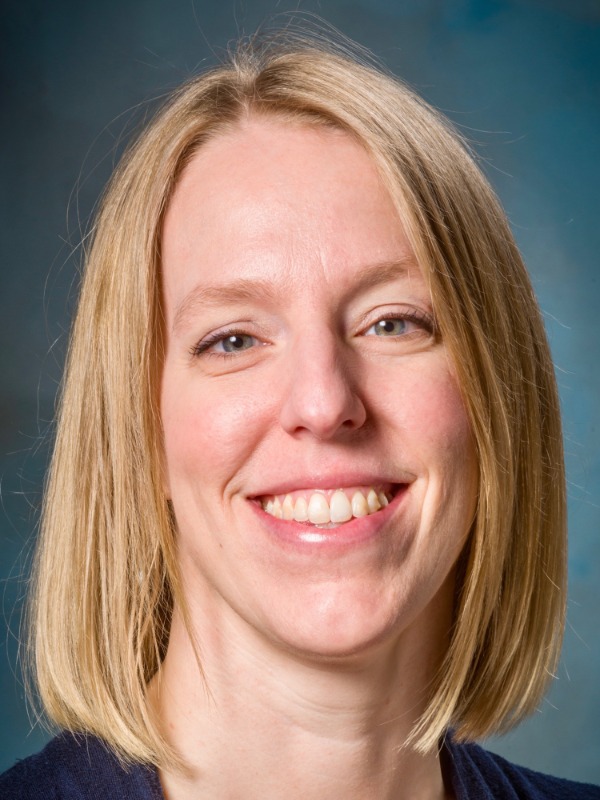Valerie Carr
 |
Professor
Keywords |
Current Research Activities
The overarching goal of my research program is to understand biological and psychological factors that influence learning and memory across the lifespan. These interests can be broken down as follows:
(1) international research partnerships that involve neuroimaging methods, (2) behavioral research performed by students in my lab, and (3) scholarship of teaching and learning research conducted with SJSU colleagues. The neuroimaging arm of my research program involves two main partnerships. First, with colleagues at Stanford, we are examining how individual differences in brain structure and function among older adults relate to differences in memory abilities. Second, in collaboration with colleagues from around the world, we are developing a unified method for anatomically defining subfields of the human hippocampus, a brain region known to be critically important for memory. Here at SJSU, I lead the Carr Lab Investigating Memory and the Brain (CLIMB), where I work with student researchers on projects relating to physical fitness and memory, depression and memory, divergent thinking and semantic memory, and meta-analyses of MRI studies relating to Alzheimer's disease and major depressive disorder. Finally, I am actively engaged in pedagogical research performed in collaboration with faculty from the Colleges of Social Sciences, Engineering, and Education, as well as the Center for Faculty Development. Our interdisciplinary team examines factors that influence the success of students in a new interdisciplinary computing minor degree and in a similar program for lower division and community college students, Applied Programming Experiences.
Research Connections to Current Events
I. The incidence of Alzheimer’s disease and other age-related memory disorders is expected to rise sharply as the Baby Boomer generation reaches retirement age and beyond. This increased incidence will put a heavy strain on the American healthcare system as well as families and caregivers, to which end research on age-related brain and cognitive changes is of great importance. My research on biological and psychological factors that influence learning and memory across the lifespan aims to address this very need.
II. With online learning here to stay, a better understanding of factors influencing learning in online courses is more important than over. My students and I are currently investigating whether students engage in more multitasking when learning online than in-person, and if so, what the consequences of this multitasking are on learning.
III. A large number of students major in social sciences disciplines here at SJSU and across the US, yet social science majors have among the highest unemployment rates of all college graduates. In creating the Applied Computing minor, my colleagues and I aim to provide social science students with computing education that will expand their career opportunities and increase their income while addressing the need for a diverse, technically-skilled workforce. In collaboration with colleagues across the university, I am conducting research to optimize the success of this program, with the ultimate aim of making computing education more accessible to a broader segment of SJSU students, including those who are traditionally underrepresented in STEM. We recently created a similar program for lower division and community college students, Applied Programming Experiences.
Personal Connections to Research
I.I was drawn towards the sciences as a child, inspired by grandparents who grew up on farms in rural Alabama and who worked incredibly hard to not only attend college, but to earn graduate degrees in physics and chemistry, respectively. I myself developed a love of biology in high school, and I planned to major in it once I reached college. However, an AP psychology course introduced me to the fantastically interesting world of neuroscience, and I decided to pursue an interdisciplinary minor in biological psychology, instead. In college, a transformative research experience the summer before my senior year (via an NSF Research Experience for Undergraduates program) led me to the research approach that I have now pursued for 20 years: neuroimaging. Although I can’t pinpoint a specific incident that contributed to my interest in the neuroscience of learning and memory, my many years as student made me curious about the best ways to learn and retain information, how knowledge is stored in the brain, and why memory declines as we age.
II. As an undergraduate student I took many challenging technical courses (calculus, organic chemistry, neurophysiology, etc.), yet I didn’t take a computer programming course, namely because it never occurred to me that programming could be relevant to my interests. I soon learned otherwise, when I began a position as a research assistant in a neuroimaging lab after graduating college. Having to learn programming in my spare time was an incredibly stressful experience, and one that I had to repeat when I got to graduate school and needed to learn a different language in my new lab. These experiences played an enormous role in motivating me to help develop and conduct research regarding the Applied Computing minor.